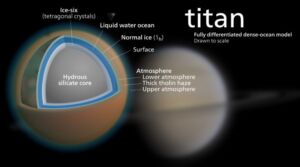
Pi Day, celebrated annually on March 14th (3/14), honors the mathematical constant π (pi). Known for its approximate value of 3.14, this constant represents the ratio of a circle’s circumference to its diameter and holds profound significance in mathematics, science, and engineering.
This article dives into the origins of the celebration, explores its importance in various fields, and highlights engaging ways to celebrate this iconic day. Whether you’re a math enthusiast or just enjoy a good pie, this day offers something for everyone.
The History of Pi and Its Celebration
The Discovery of Pi
The concept of pi dates back thousands of years. Ancient civilizations, including the Egyptians and Babylonians, approximated it to build structures and solve practical problems. The Greek mathematician Archimedes made significant advancements in calculating its value using geometric methods, setting the stage for its modern understanding.
The Birth of Pi Day
The celebration of March 14th began in 1988, initiated by physicist Larry Shaw at the Exploratorium in San Francisco. The date was chosen because it matches the first three digits of the constant (3.14). Since then, the event has gained international recognition, even being officially designated by the U.S. Congress in 2009.
The Significance of Pi in Mathematics and Beyond
Mathematical Applications
Pi is integral to solving problems involving circles, spheres, and waves. It appears in formulas for calculating:
- The area of a circle: πr²
- The volume of a sphere:
- The circumference of a circle: 2πr
Beyond geometry, it also plays a role in trigonometry, calculus, and statistics.
Scientific Importance
In science, pi is essential for understanding:
- Astronomy: Calculating planetary orbits and celestial phenomena.
- Physics: Modeling wave patterns, such as sound and light.
- Engineering: Designing structures, circuits, and other innovations.
How to Celebrate Pi Day
Fun Activities for Math Enthusiasts
- Recitation Contests: Challenge yourself or others to memorize as many digits as possible.
- Math Puzzles: Solve problems that involve circles, spheres, or other geometric shapes.
- Creative Arts: Draw or paint using circular patterns inspired by this constant.
Delicious Celebrations
- Bake a Pie: Combine your love for math with a delicious treat by baking a pie. Bonus points for decorating it with the symbol π.
- Pizza Party: Celebrate with a circular favorite, pizza, and enjoy a slice (or two).
Educational Opportunities
- Teach the History: Share its story with students, colleagues, or friends.
- Host a Lecture or Workshop: Explore its applications in science, math, or engineering.
- Visit a Science Museum: Many institutions host events with interactive exhibits.
Fascinating Facts About Pi
- Irrational and Infinite: Pi is an irrational number, meaning it cannot be expressed as a simple fraction. Its decimal representation never ends or repeats.
- World Records: The record for reciting digits stands at over 70,000.
- Computer Calculations: Supercomputers have calculated it to trillions of digits, showcasing advancements in computational power.
Pi Day Around the World
This event isn’t just for mathematicians. It’s celebrated globally, with activities ranging from math competitions to pie-eating contests. Schools, universities, and communities use the occasion to promote STEM (Science, Technology, Engineering, and Mathematics) education, making math engaging and accessible for all.
Conclusion
Pi Day is more than just a celebration of a mathematical constant; it’s a day to appreciate the beauty and utility of mathematics in everyday life. From its historical roots to its modern applications, it continues to inspire curiosity and creativity. Whether you spend the day solving equations, baking pies, or simply marveling at the wonders of math, this occasion is worth celebrating.
So mark your calendar for March 14th and join the global festivities. Happy Pi Day!



